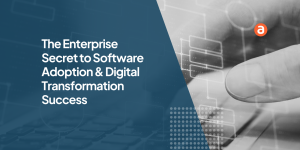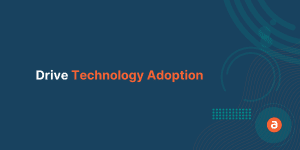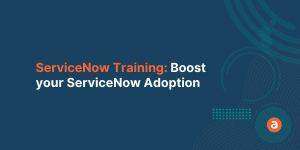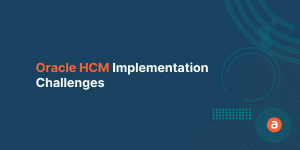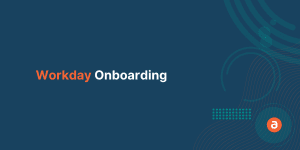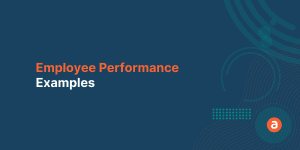It is common for business to spend indecent amount of dollars on procuring new tools to improve their processes and performance. But what if these tools are not providing the expected or desired value? The potential loss of such a case is extremely high.
This is why it is of paramount importance that you are cautious in selecting the right tool. Not only that, it is also crucial to have all necessary measures in place to help you derive maximum value for the money spent on the tools.
Typically, while assessing a tool or software application, company management has certain expectations from it, like:
- increased efficiency and productivity
- happier employees
- faster adoption
- employee engagement
- competitive advantages and more
It is very likely that your employees might face challenges with the new tool initially. But this doesn’t mean that the tool isn’t perfect. The reason for their discomfort might be they are already accustomed to another tool, or multiple tools.
It is up to the management to make the employees feel at ease with the software. Understanding the difference between Software usage and Software adoption is necessary to expect a better ROI from the purchased tool.
Before we get to understanding them better, let’s take a look at the steps that are involved typically in the purchase of any software:
- Identify areas for improvements
- Look for the best tools that allow the improvement
- Identify the right product
- Purchase the tool after analyzing ROI parameter
- Implement it
- Read the benefits of the tool OR Analyze why it’s a Failure
- Again repeat from step 1
These are the steps followed by a majority of companies. Each step involves lots of research work. Here, we are going to concentrate on step 6 in which, the role of enterprise software adoption and usage comes into play.
Every day when we get to the office, we all have our to-do list ready. We leverage software just to make our work easy & accomplish our tasks faster.
What is Software Usage?
Software usage is a measurement of usage of a software and its various features by a user. When a user (an employee in this case), logs on to a software application and interacts with the system, it is referred to as software usage. Software usage isn’t always meaningful work.
What is Software Adoption Rate?
Software adoption rate is a measurement of how well a software is being utilized as intended by its users. Software usage doesn’t always equate to software adoption since different users have different requirements from a system and the context of software usage matters, to measure adoption.
But we do have certain problems here, such as:
- Do we know how to fully use them?
- Do they meet our requirements?
- Does it take longer to complete our tasks?
- Is there a simpler way of doing it?
The end-user might have such doubts and might be hesitant to raise their concerns with the management. Their reluctance will have a direct impact on their performance. It is the management’s responsibility to identify those pain points in software usage and address it.
Let’s look at an example. Consider a company with about 10000 employees.
Application: Salesforce
Assume all 10000 employees use Salesforce to perform various tasks. Every individual has their pre-defined tasks and they expect Salesforce to support & enable them to accomplish their tasks.
Two scenarios might occur:
Scenario 1:
- Employees are very comfortable using Salesforce.
- The tasks are completed without any hassle.
- Completion time is minimal as they know how to use the application.
Scenario 2:
- Employees are not completely familiar with Salesforce & its potential.
- Task completion depends on complexity and employee efficiency.
- Some might learn through tutorials and complete the task
- Some might need in-person training/assistance
- The completion time is comparatively high.
Scenario 2 needs to be addressed.
Even though they somehow manage to complete tasks, efficiency is compromised.
The Takeaway:
Technically, Salesforce usage is high (10000 employees daily) but whether they use it to the fullest capabilities is where the difference lies?
Imagine if 2-3 applications are involved to complete a task and all 10000 employees face a similar issue with all the applications – That is a problem you don’t want!
Here’s what you can expect from such a situation:
- Wastage of resource, time & money
- Low employee engagement rates
- Prolonged Adoption time
- Minimal efficiency & performance
- Reduced task completion rates and so on…
Difference between Software Usage and Software Adoption
| Software Usage | Software Adoption |
| Employees use the software | Employees use the software to its full potential |
| Their tasks are completed | Their task completion happens in minimal time |
| Software is used neither optimally, nor efficiently | Software is used to maximum capacity, efficiently |
| Return on Investment is low | Faster, Higher Return on Investment |
| Example: 10000 employees using Salesforce | Example: 10000 employees using Salesforce to the fullest capacity |
By now, you would have understood that purchasing and adopting enterprise software are two different entities, which is the real gap between usage and software adoption.
How To Increase Software Adoption
Now that you know the difference between software usage and adoption, here are the ways you can increase software adoption at your enterprise:
- Efficiently Onboard Employees – Onboarding is crucial and if not done right, employees could end up not using the software efficiently. When employees are efficiently onboarded to a platform and walked through the most commonly used features, software adoption rate increases immensely.
- Provide Ongoing Training and Support – Employees forget around 70% of what they learn in training within a day. When employees are onboarded efficiently and learning is reinforced regularly with ongoing training and support, employees retain information much better and for much longer.
- Define KPIs To Measure Adoption – Measuring software adoption isn’t very easy and to efficiently do it, you have to define KPIs that you are going to measure. For starters, measure the completion rate and drop-off rate of the main features by different segments of users.
- Promote a Feedback Culture – Allow employees to openly share issues that they have with the software. This will help you find and fix friction points that are hindering software adoption. Promoting a feedback culture at your workplace will help you in many other ways.
- Use a Digital Adoption Platform – Apty DAP allows you to do all this with in-app guidance and 24/7 support. It simplifies app training and unburdens your support teams. It is also remote work friendly and can be accessed from the application itself with its in-app help-deck
Bridge the gap with Digital Adoption
Digital Adoption paves way for businesses to maximize their employee proficiency on the existing or new enterprise software. Encourage your employees to not only use the software but also to ensure that it is being utilized to the fullest potential.

The practical difficulty lies in measuring and getting insights about software usage. No enterprise application will give you the intricate details lying in usage because they want to showcase that their software is highly effective and useful.
But reality and data might not always agree with them.
This is where Apty DAP stands out from the others.
Apty, the highest-rated Digital Adoption Platform for customer satisfaction, is your go-to tool for addressing all the adoption-related challenges. Apty provides
- Detailed insights on software usage – where your employee is struggling hard to do a task
- Interactive walkthroughs – guides your employees throughout the process to perform the task
- Tooltips– provides useful information that reduces mistakes
- Employee engagement – provides in-app training and ensures maximum engagement
To maximize returns on your Enterprise software and to realize software adoption, invest in a Software Adoption Platform like Apty. This will lead your company to unleash the full potential of all your enterprise software.
FAQs on Software Usage vs Software Adoption
How do you drive software adoption?
To drive software adoption, provide assistance to employees, analyze and find gaps, and fix those gaps with contextual guidance.
What is the difference between usage and adoption?
Software usage is simply logging on to a platform and engaging with it, whereas, software adoption is leveraging and using the platform to reap its benefits. To measure adoption, you have to measure usage with context.
How can app adoption be improved?
A Digital Adoption Platform (DAP) or a software adoption platform is the most sought-after solution to improve app adoption. Apty DAP is well-known for its ease of use and deployment and is trusted by several fortune 500 companies.

